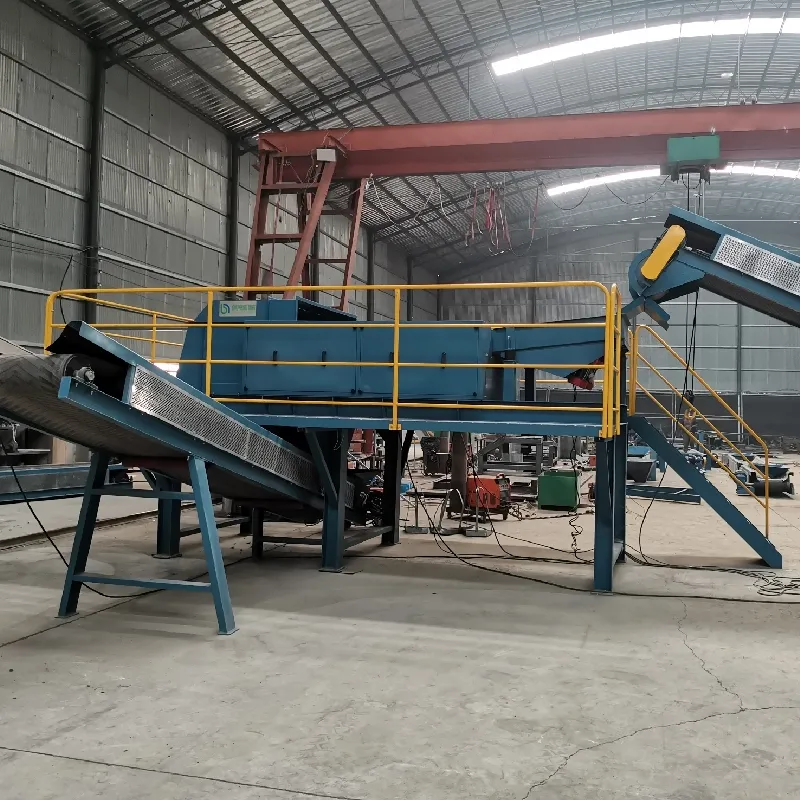The principle of the hammer mill is both simple and highly efficient, harnessing the power of mechanical and kinetic energy to reduce material size. Through years of industry observation, hands-on experience, and expert insights, an intricate understanding of these mechanisms has emerged, solidifying the hammer mill's role as an indispensable tool in various production lines. As a seasoned analyst with years of contributing to industrial efficiencies, here is a comprehensive exploration of this equipment's underlying principle and practical applications.

Hammer mills operate on the principle of impact; the core idea is that larger feed materials are pulverized through repeated high-speed mechanical blows from finely-calibrated hammers attached to a rotor. Driven by a motor, this rotor spins rapidly inside a sturdy chamber. As the rotor turns, the hammers swing out to a set radius under the influence of centrifugal force, contacting the feedstock that enters the chamber from above. Upon impact, the feed materials are crushed on contact with these hammers and further condensed as they collide with the inner surfaces of the chamber.
One of the essential attributes of hammer mills is their versatility for size reduction. The process allows for the controlled adjustment of particle size output through interchangeable screens or bar grates, varying the degree of material that can exit the chamber, ensuring only properly sized particulates do so. This adjustability translates into myriad applications across industries such as pharmaceuticals, agriculture, food processing, and minerals, where custom granularity is critical.

In agricultural settings, hammer mills play a key role in processing grains and forage into feed that bears optimal nutritional value. By transforming bulky grain into a manageable, easily digestible form, the hammer mill enhances the animal feed efficiency. Similarly, in pharmaceuticals, hammer mills guarantee precise particle sizing, ensuring consistent dispersion in powder form medicines which is vital to maintaining the stability and homogeneity of compound ingredients.
Expertise further validates the suitability of hammer mills in minimizing waste, especially in the recycling sector. By facilitating the breakdown and reprocessing of scrap materials, hammer mills enable a circular economy with applications that extend to metal recycling, where scrap aluminum or steel is transformed into reusable raw materials.
what is the principle of hammer mill
Trustworthiness in hammer mill operations corresponds to various safety measures and innovations such as heat-treated hammers for longevity, overload protection systems, and sound-dampening technologies. Reliable operation and user-friendly maintenance protocols further underscore its credibility among operators worldwide.
What distinguishes hammer mills in industrial use is not just the basic working principle but the continuous innovation embedded in design and function. Modern adaptations, including pneumatic suction to reduce dust, semi-automated feed mechanisms for greater throughput, and optimized rotor design for energy efficiency, make the hammer mill an evolving asset in high-demand sectors.
In the era of Industry 4.0, leveraging detailed real-time operational data has become imperative for adopting predictive maintenance strategies in hammer mills, ensuring greater uptime reliability. This digital integration equips operators with actionable insights, realigning production schedules with minimal downtime and forecasting component wear more precisely.
In conclusion, understanding the principle of a hammer mill is foundational for industry practitioners aiming to optimize production processes. Its impact-based energy conversion efficiently realizes varying material states and is pivotal in progressive industrial applications. Hammer mills are not merely crushing machines; they represent an intersection of traditional engineering and modern enhancement, promising efficiency and cost-effectiveness for a diverse array of sectors. As industries evolve, the adaptability and robust construction of hammer mills cement their authority as a staple of industrial machinery.


